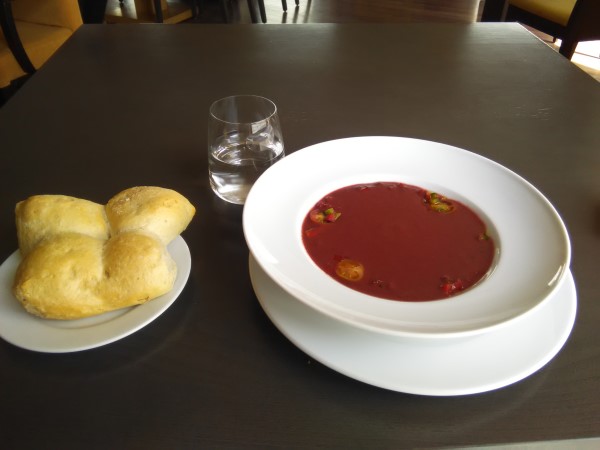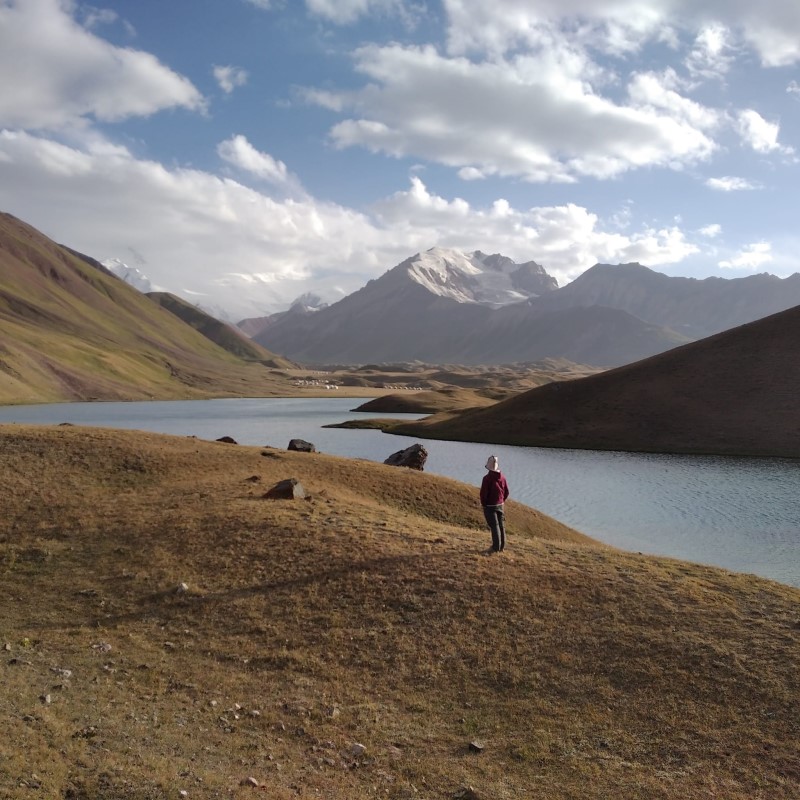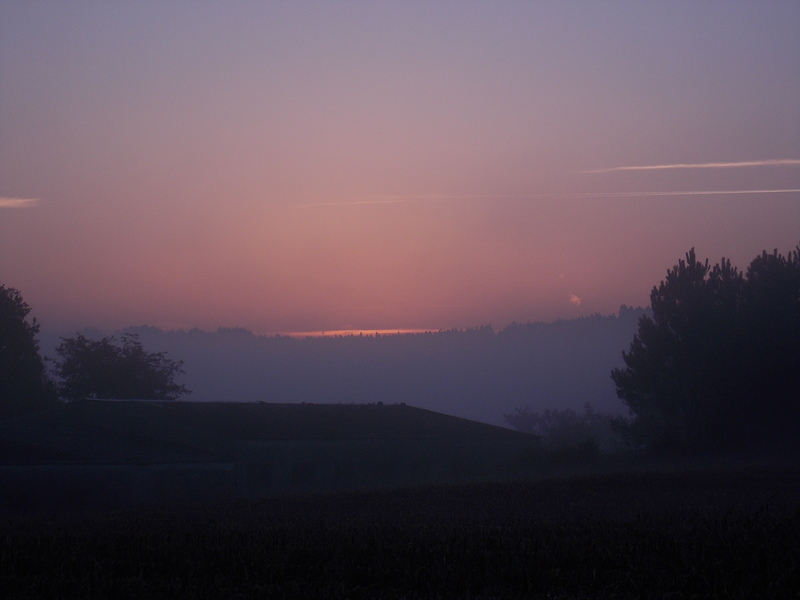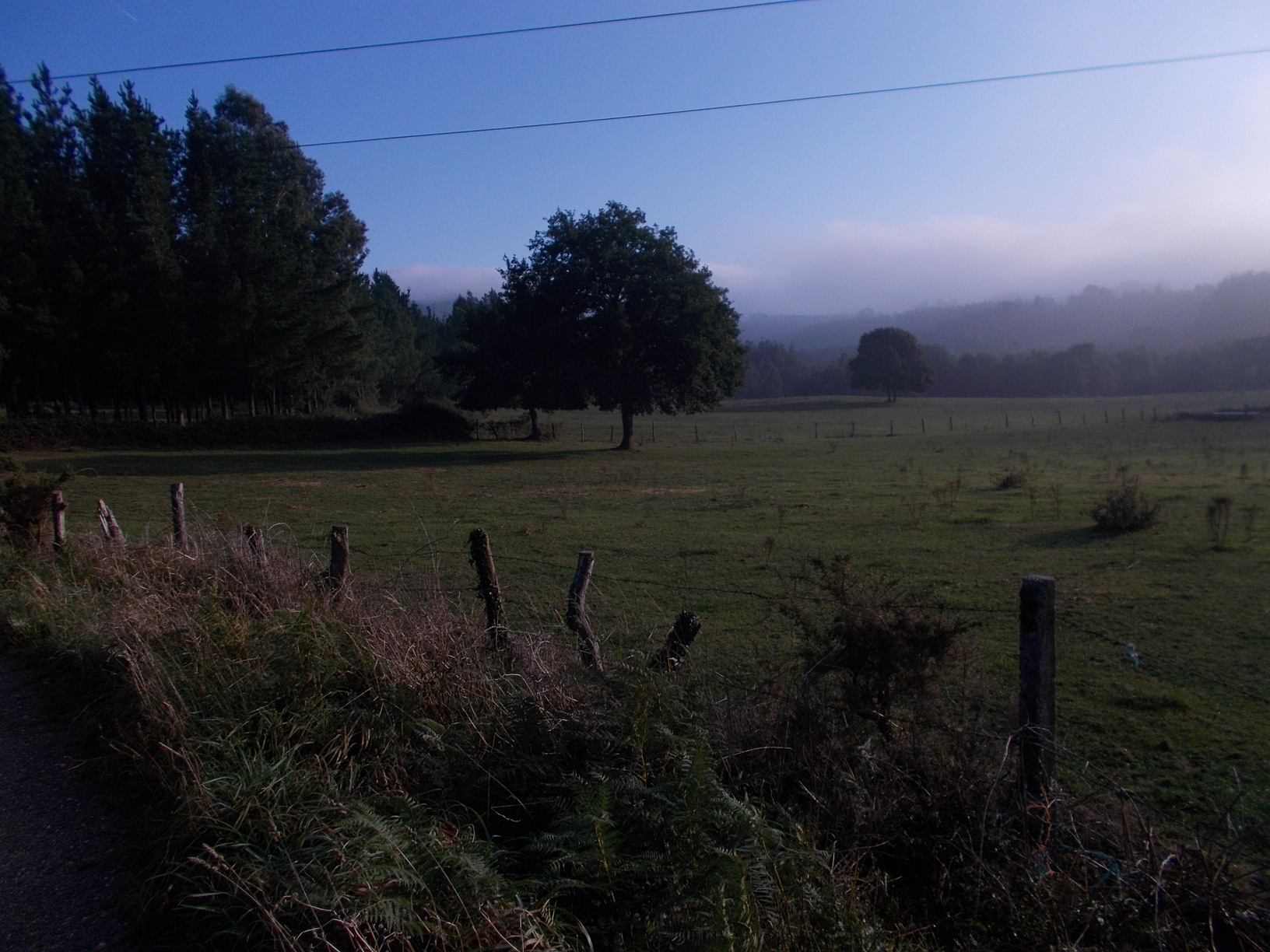
Basic Information
- Starting Point: Burgos, Spain – The magnificent cathedral city and cultural highlight of the Camino Frances, with two big pilgrim albergues (each having over 100 beds), many other accommodation options, and all services for pilgrims (and for tourists too :)).
- Ending Point: Hornillos del Camino, Spain – A classic pilgrim village with traditional stone houses and peaceful atmosphere of the Meseta. With only 50 inhabitants, the town lives entirely from the pilgrimage, with shop, bar, restaurant, and three pilgrim albergues (+ some private accommodation options). The funny thing is that on most days of the year, the number of pilgrims sleeping in Hornillos exceeds the number of people who actually live in the village.
- Availability of an alternative route: No, as it is often the case on the Meseta, there aren’t any other trails or paths except of the Camino.
- Distance: 20.5 km (Download GPS here)
- Online Map: map.
- Elevation Difference: +140 m ascent, -185 m descent
- Difficulty Score: 2/5. The stage isn’t difficult in terrain or length or elevation. However, you are completely exposed to the elements of nature on the Meseta. In strong sun or strong wind, the difficulty grade easily climbs to three or even four, especially if you find yourself still walking in the afternoon.
- Beauty Score: 3/5.
- Terrain/Asphalt Walking Ratio: 75% trails, 25% asphalt/paved roads/right next to the road.
- Next stage: Camino Frances Stage no. 13, Hornillos del Camino – Itero de la Vega.
- Previous stage: Camino Frances, Stage no. 11, Villafranca Montes de Oca – Burgos.
Elevation profile for the route

– Welcome to the Meseta. Except of the start and a small climb at the end, you spend the entire day between 820 and 860 meters above sea level. The ups and downs are barely noticeable, with gradient rarely surpassing 2%. The steep descent before Hornillos is a welcome change for the knees and legs and also for the eyes.
Advanced Info About the Stage
- Trail Marking: Well-marked but pay attention where urban Burgos transitions to rural paths. As always, entering and leaving big cities is the most tricky part of navigating on the camino.
- Natural Highlights:
- The Meseta Begins: Experience your first true Meseta landscapes – endless golden fields under big skies. Some people love it for a week, some for a day, and some just for the first hour :). Let’s see to which group you belong.
- Mirador de Hornillos del Camino: The scenic viewpoint at the top of the hill above Hornillos. Nice views of the Meseta that change a lot during the year (green fields in spring, dry ground in summer and autumn, snow in winter…). Right on the camino, you cannot miss it. Location on Google maps here.
- Historical & Cultural Highlights: Nothing to mention in particular, but the “Meseta villages” you pass through, such as Tardajos or Rabe de las Calzadas, have their specific charm. Depending on the month of the year and time of the day you pass through, some can easily resemble ghost towns. And things will get only better (with ghost towns :)) the next days on the Meseta.
- Camping/Bivouac Options: There aren’t any official camping places along today’s stage. Wild camping or bivouacking, as you can imagine, is a bit tricky on a landscape like this one, with barely any trees, and almost entirely flat. On the other hand, there are a lot of empty flat spaces where one can pitch a tent, and where with almost 100 percent certainty nobody will pass at night. If you’re comfortable sleeping in such an open space, wild camping is totally doable on the meseta.
- Dog-Friendly Score: 2/5. Too open, monotonous, and dry. While you will pass a couple of shaded areas on the way, it is still a hard ordeal for any dog walking through the meseta. The earth gets very hot as well at times, so unless you start walking pretty early, it isn’t a bad idea giving your dog protective booties (so the ground beneath doesn’t feel so hot). All in all, the recipe for surviving walking through meseta with your dog is the following: 1. Start very early every day. 2. Take a lot of water with you, just for the case. 3. Don’t try to do long distances. 4. If it is still too tough, there’s no shame taking public transport all the way to Leon or even to Astorga, and continue walking from there. There aren’t any dog friendly albergues in Hornillos, and for one you’ll have to continue 10 extra kilometers to Hontanas, to this place.
- Special Remarks: If you decide to camp or bivouac anywhere on the Meseta, you should realize that this is a desert landscape, and the temperature changes resemble the patterns you’d observe in a real desert. The temperature can reach 40 degrees Celsius during the day but drop to 5 at night. Make sure you have proper sleeping bag and equipment with you, should you decide to sleep outside on the meseta.
My picks for accommodation on this stage
- Albergue de Tardajos (km 11): Basic but clean donation based albergue in a peaceful environment. Since it is close to Burgos, you will typically find a bed there even in the high season of the camino. No kitchen but there is an eating space and microwaves. You can eat outside in the village as well. Open from 3pm, they do not accept reservations. Location and reviews on Google maps here.
- Albergue Liberanos Domine, Rabe de las Calzadas (km 13). A peaceful place with 24 beds, communal dinner and breakfast. Price 12 euro/night, dinner is 10 euro extra, breakfast another 3 euro. Very nice hosts, dinner from 6 to 8, communal prayer after 8pm (you join only if you want). Location and reviews on Google maps here, check-in from noon.
- Albergue El Alfar (km 21): Cozy private albergue with a small garden, communal dinner, and nice hosts. Likely the best one in Hornillos. €15/night, 24 beds. Check-in from noon, you can make a reservation on the following phone number: +34 654 263 857, or reserve it quickly on Booking, exactly here.
Pictures from the stage
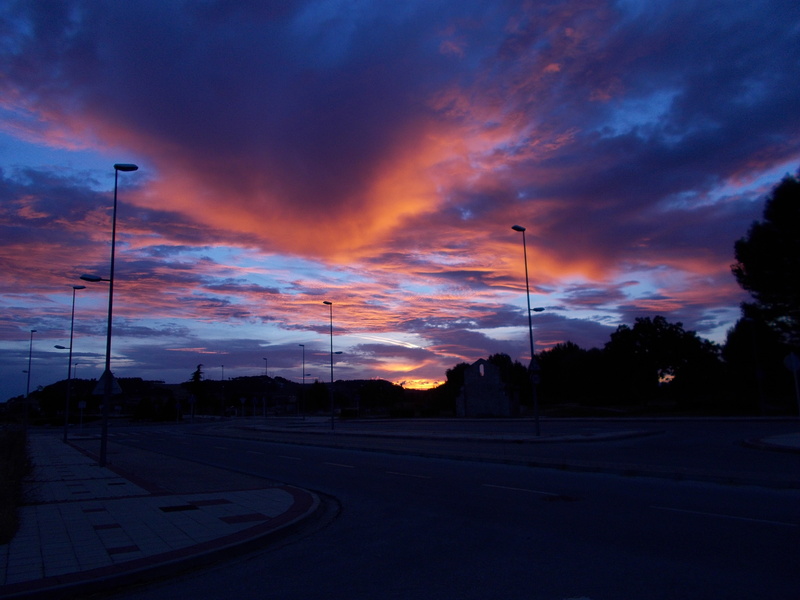 – Leaving Burgos before sunrise is definitely worth it. For the sky, for the peace that even big cities in Spain have before 7am, and of course also to avoid the afternoon heat on the meseta.
– Leaving Burgos before sunrise is definitely worth it. For the sky, for the peace that even big cities in Spain have before 7am, and of course also to avoid the afternoon heat on the meseta.
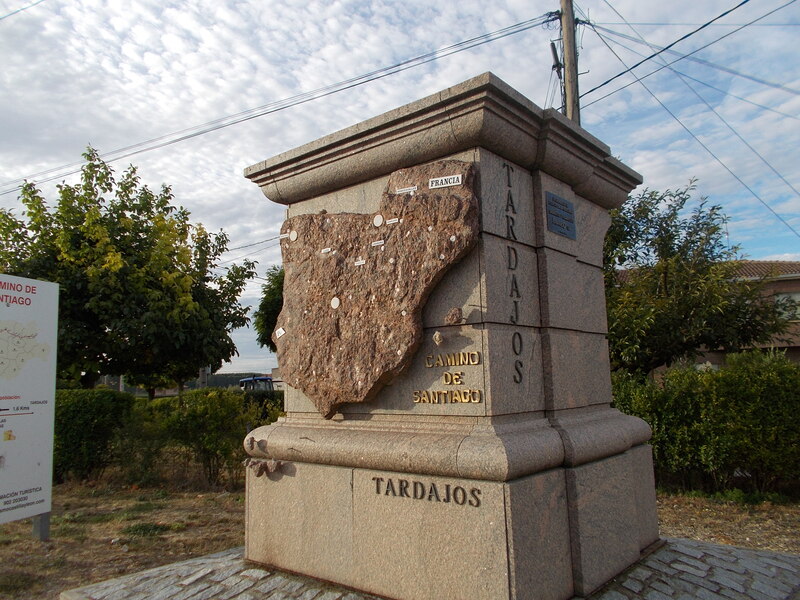 – Tardajos, basically the first village on the meseta. Some people who do not like big cities skip Burgos altogether and sleep here, in a nice donation-based pilgrim hostel.
– Tardajos, basically the first village on the meseta. Some people who do not like big cities skip Burgos altogether and sleep here, in a nice donation-based pilgrim hostel.
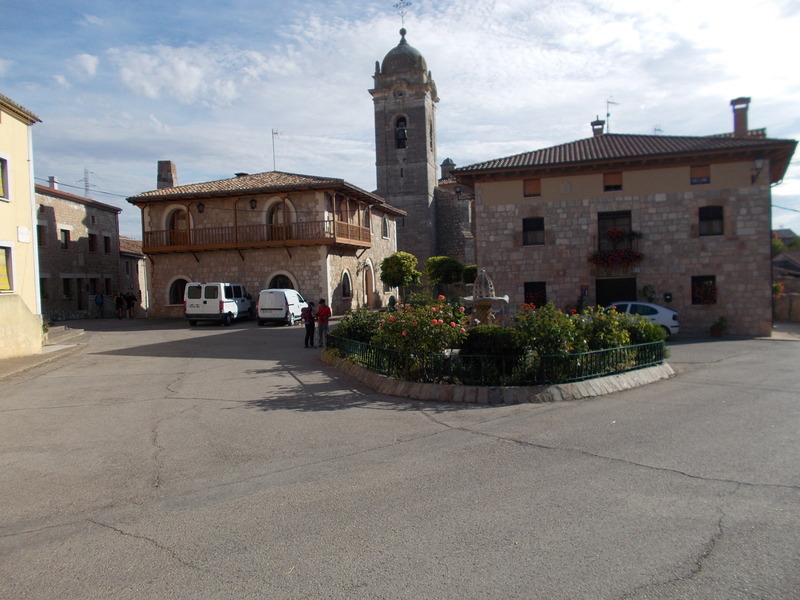 – Rabe de las Calzadas, another small village with a nice albergue
– Rabe de las Calzadas, another small village with a nice albergue
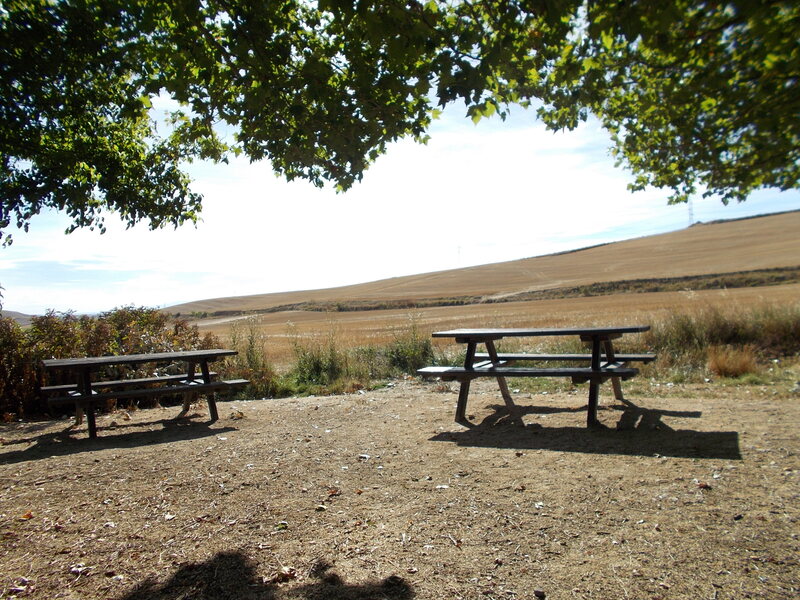 – Places like this, with a big tree, benches, and shade, are very rare on the meseta. With hot Spanish sun high on the sky, sitting here for a while seems almost like finding an oasis in the desert 🙂
– Places like this, with a big tree, benches, and shade, are very rare on the meseta. With hot Spanish sun high on the sky, sitting here for a while seems almost like finding an oasis in the desert 🙂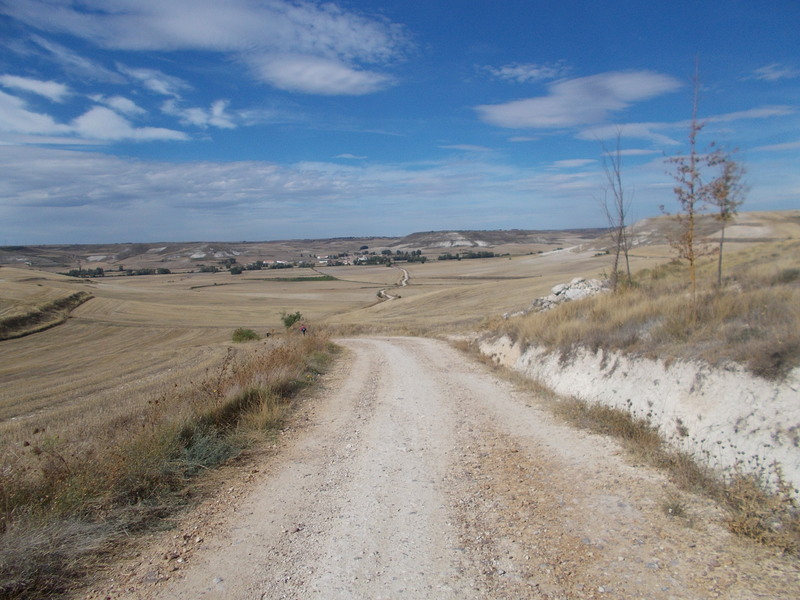 – The dry landscape of meseta in the autumn. Would you believe that in some periods of the year, everything here is green?
– The dry landscape of meseta in the autumn. Would you believe that in some periods of the year, everything here is green?
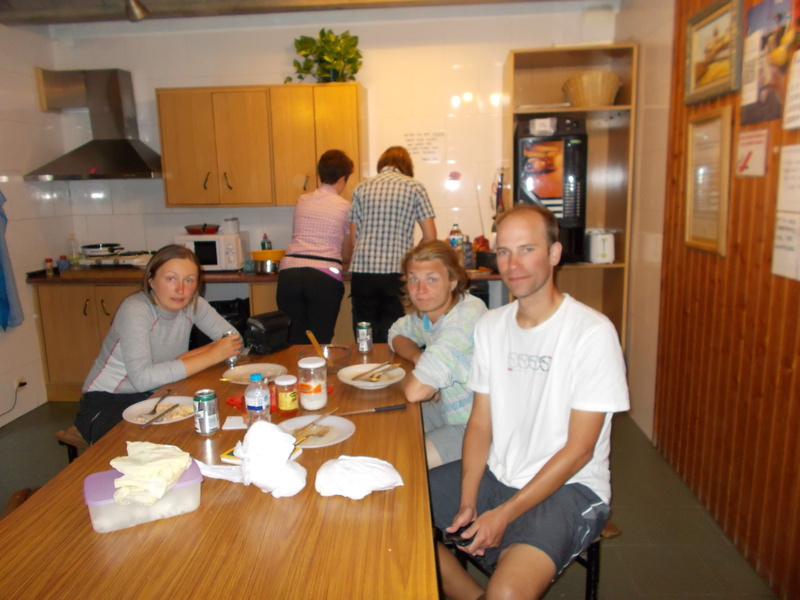 – My German and Czech pilgrim friends. Was long time ago, who knows what they’re up to in life now?
– My German and Czech pilgrim friends. Was long time ago, who knows what they’re up to in life now?
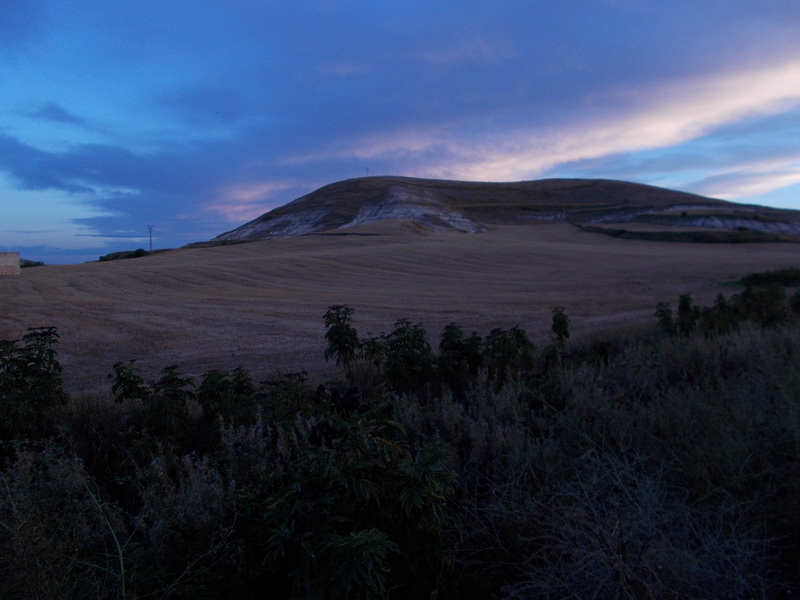 – The viewpoint above Hornillos, picture taken from the village. You will pass this point on your camino.
– The viewpoint above Hornillos, picture taken from the village. You will pass this point on your camino.
Few tips at the end
- Meseta – ideal for thinking and meditation. Let’s face it: many of us head for the camino trying to battle some personal demons, or to make a difficult decision about our future, or to finally find out what to do with our life :). Meseta, the part of Camino you enter today, is ideal for thinking, reflection, and inner journey. While the landscape has its beauty the way is rather monotonous. No way of getting lost, and lack of new impulses for the senses… If you walk the camino (also) to think something important over in your head, this is an ideal part of the way to do so… Start early or late to avoid the crowds, or sleep in the small villages in-between the typical ending points of stages, in order to enjoy more solitude and time for thinking.



![Ultralight Packing List for Camino de Santiago [2025 Edition]](https://caminolovers.com/wp-content/uploads/2022/03/altra-shoes-640-x-480.jpg)
